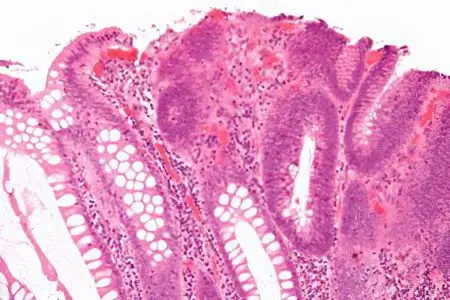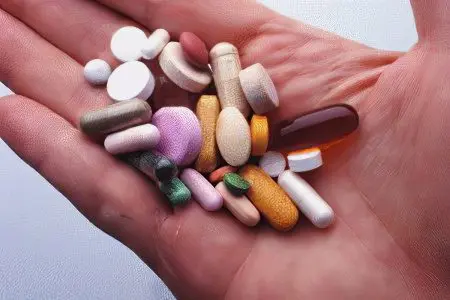Contents
Definition of varicocele

A varicocele is a varicose vein that forms the pampiniform (pampiniform) plexus of the testis. The word “varicocele” in Greek means “a tumor of the venous nodes.” This pathology is quite common among all age groups, but is more often diagnosed in adolescents from 14-15 years of age during puberty.
Varicocele is determined in 10-15% of men, if they are men with infertility, then varicocele appears in 40% and 80% of men with secondary infertility, that is, those from whom women have already had offspring.
Varicocele causes
Varicocele occurs due to increased pressure in the veins, usually due to the peculiarities of their anatomical location. Due to the peculiarities of the course of the left testicular vein, varicocele often occurs on the left. Factors contributing to the development of the disease include prolonged excessive exercise, diseases that increase intra-abdominal pressure, thrombosis or constant compression of the kidney veins.
Three factors underlie male infertility: the inferiority of spermatozoa, a sharp decrease in their number, a violation of their progress and ejection to the outside. The occurrence of these problems can provoke varicocele, as a result of this pathology, the temperature in the testicles rises, their functions are disturbed, which leads to damage to the spermatozoa.
Varicocele, in other words, is a varicose vein of the spermatic cord and testicle, this disease develops when the valves in the veins fail, which contributes to the reverse flow of blood.
Varicocele symptoms
In the initial stages, varicocele may be asymptomatic. Only pain in the scrotum and testicle, intensifying as the disease progresses, can state its appearance. As a rule, patients experience a pulling pain in one or both testicles, scrotum, in the inguinal zone, there is an increase or descent of the scrotum, on the left side.
Pain is aggravated by physical activity, walking and during intercourse. The disease is very dangerous for its consequences for men of reproductive age. Testicular varicocele disease can have a chronic course. Often, a deviation from the norm in many men turns out to be an accidental finding when examined for some other disease.
1, 2, 3, 4 degrees varicocele
There are four grades of varicocele:
Grade 1 – varicose veins are determined only with the help of an ultrasound machine or Doppler ultrasound.
Grade 2 – the expansion of the vein is palpable in a standing position.
Grade 3 – dilated veins are palpable in any standing or lying position.
Grade 4 – expansion of the vein of the testicle and spermatic cord are visible during visual inspection.
Varicocele appears in adolescents of adolescence, during puberty, after reaching some degree it is no longer aggravated. It is extremely rare that a transition from one degree to another is possible. Varicocele on the right side or on both sides is rare.
A change in the genital vein is detected by a urologist during a visual examination. If the increase in veins is insignificant, then a special examination is carried out for greater persuasiveness.
Treatment of varicocele

During the examination, varicose veins are detected by touch when straining in a vertical position of the body, while it is visually visible whether there are changes in size and when probing it becomes clear whether the consistency of the testicle has changed or not. If there is doubt about the correctness of the diagnosis, a conventional ultrasound examination is performed to determine the size of the testicle and the internal structure.
Doppler ultrasound is also prescribed, this method examines the vessels of the testicle and the nature of the blood flow in them, accurately detects whether there is a backflow of blood into the veins of the spermatic cord. Laboratory diagnostics is used – a spermogram, to clarify the degree of testicular dysfunction, only an operative method of treating varicocele gives a positive effect.
If the disease is manifested by pain in the scrotum or infertility, the operation must be performed as soon as possible after the diagnosis is established. If a man with varicocele is not bothered by anything, and there is no need to continue the offspring, then surgery can be dispensed with. There are three main ways to treat varicocele:
traditional operation or operation according to Ivanissevich – is carried out by the method of ligation, intersection or removal of a varicose vein, incisions are made, about 3-5 cm long. Endoscopic operation – three small punctures are made in the patient’s abdomen, an endoscope is inserted through one of them, the vein of the affected testicle is bandaged . The operation lasts about 15-20 minutes.
sclerosis of the veins of the spermatic cord – a catheter is inserted through the puncture of the femoral vein into the groin, penetrates into the inferior vena cava, then into the left renal vein and then into the mouth of the affected vein. Fill it with a sclerosing substance, thereby stopping the flow of blood through the vessel.
The advantages of these types of surgery include the absence of blood loss, rapid recovery. Recovery occurs after a one-month rehabilitation period, it is recommended to exclude sexual intercourse, limit the use of salt, spicy and bitter foods, physical activity.
Among the possible unpleasant processes after the operation of varicocele, stagnation of lymph in the tissues of the testicle, swelling of the testicle and scrotum, pain in the testicle, dropsy of the testicle are distinguished. All this passes through time. The chosen method of operation is of great importance. For example, a laparoscopic or microsurgical method excludes the violation of the integrity of the seminal artery and testicular atrophy, the violation of reproductive function. Also, modern surgery guarantees the absence of relapses, the reappearance of testicular varicocele.
As a possible consequence, varicocele can cause endocrine infertility, which consists in a violation of spermatogenesis and sperm morphology, and immune infertility, when the own immune system determines the foreignness of testicular tissue and spermatozoa and exposes them to attack.
Indications for operation
Varicocele surgery should be done only in 3 cases:
If the testicle has decreased in size
If a person feels discomfort
If the amount of sperm has decreased
In all other cases, only observation by a urologist every six months is sufficient.
Prevention of varicocele
Prevention should be given due attention at any age. Pathological varicose veins in children can be congenital or acquired, the diagnosis is usually grade 1. If a boy grows in the family, one must not forget that such a problem may exist, since 2% of the examined patients have a grade 10 disease, and 3% of adolescents have a grade 5 varicocele. In childhood, pathology can be eliminated with medication.
At the age of 19–20, every man should be examined by a urologist. Usually, by this time, puberty is completed, and if the varicocele is not detected, then the appearance of the disease is no longer threatened. A healthy lifestyle, good nutrition and rest, moderate physical activity, the use of vitamins are necessary conditions for the prevention of varicose veins of the spermatic cord and testicle.
Treatment without surgery
The accumulation of blood in varicose veins adversely affects the supply of oxygen to the tissues of the testicles and epididymis. Blood stagnating in one area can lead to complications in another unaffected varicocele. The external sagging of the affected side of the scrotum does not look very attractive either.
Have not yet created methods and means of treating varicocele without surgery. It is impossible to eliminate this problem without a urologist, and even more so it is useless to look for recipes for traditional medicine, ointments and lotions will not give any result.










me oprate after 3week but swelling so much testies left side plz help me
sir me oprate before 3week but sir so much swelling my left side tested plz help me